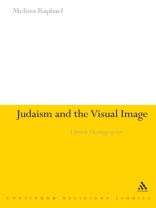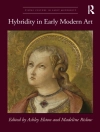The widespread assumption that Jewish religious tradition is mediated through words, not pictures, has left Jewish art with no significant role to play in Jewish theology and ethics.
Judaism and the Visual Image argues for a Jewish theology of image that, among other things, helps us re-read the creation story in Genesis 1 and to question why images of Jewish women as religious subjects appear to be doubly suppressed by the Second Commandment, when images of observant male Jews have become legitimate, even iconic, representations of Jewish holiness. Raphael further suggests that ”devout beholding” of images of the Holocaust is a corrective to post-Holocaust theologies of divine absence from suffering that are infused by a sub-theological aesthetic of the sublime. Raphael concludes by proposing that the relationship between God and Israel composes itself into a unitary dance or moving image by which each generation participates in a processive revelation that is itself the ultimate work of Jewish art.












